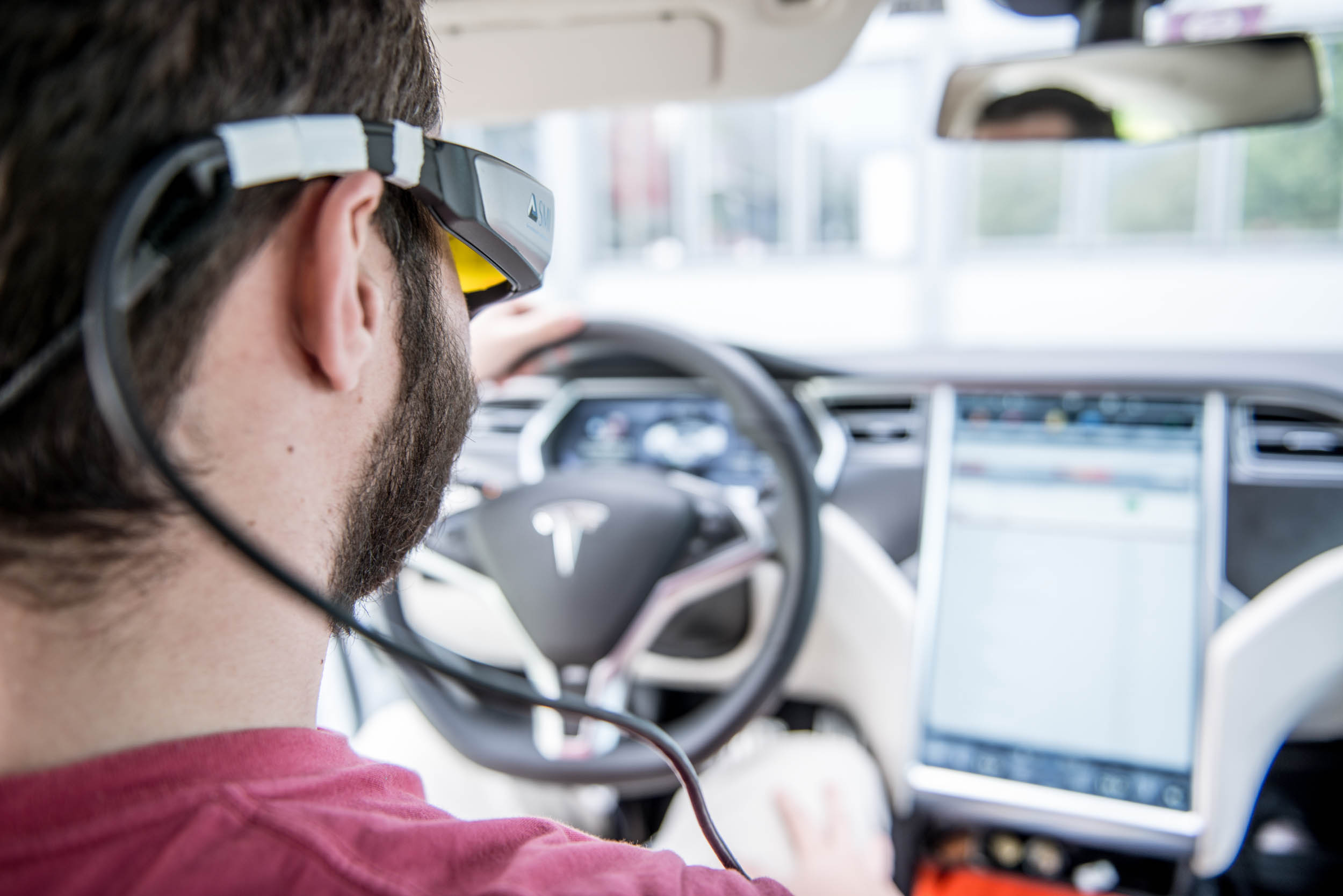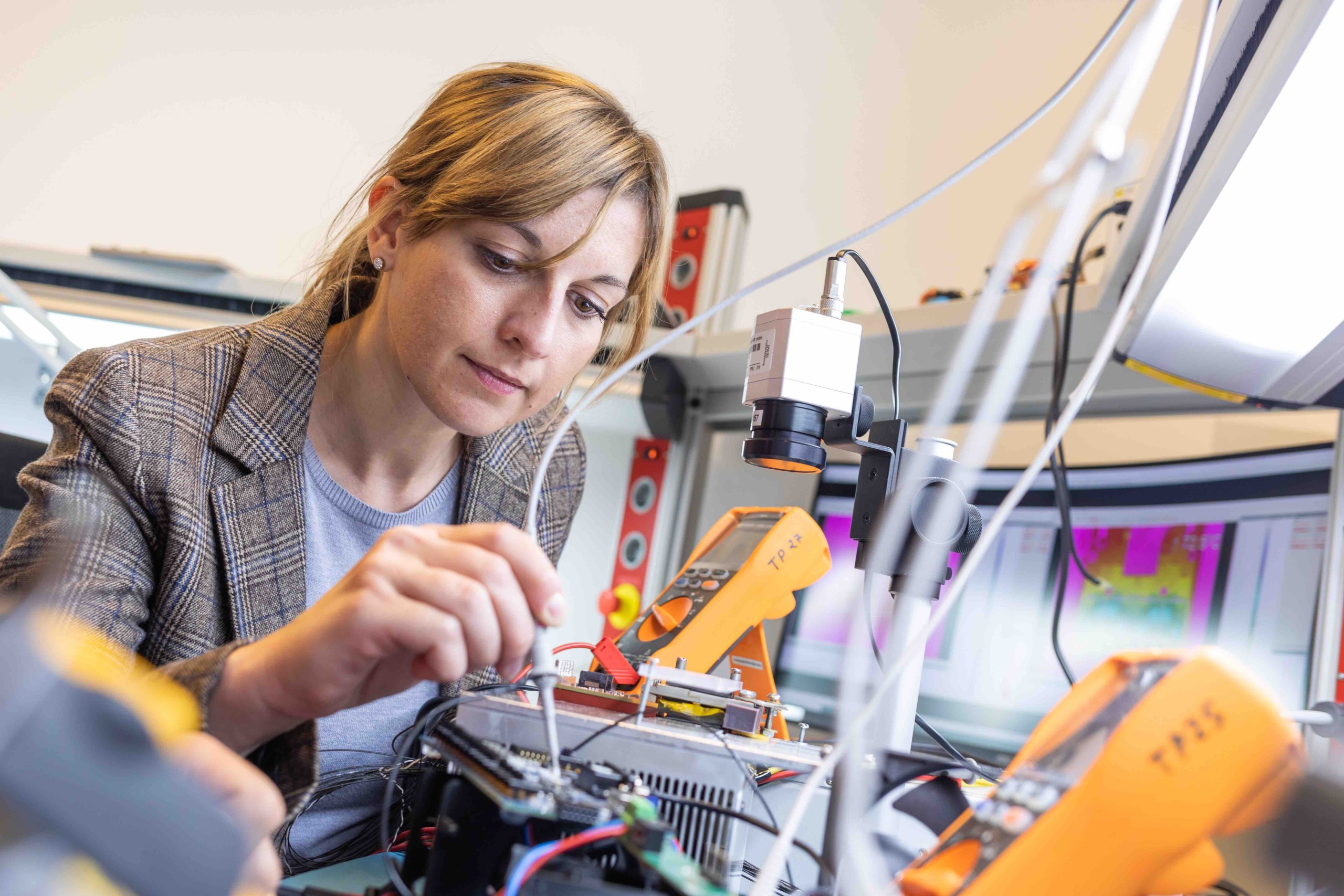Traffic management in Smart Cities, public transport, reduced environmental pollution – we are moving towards many different trends in the mobility sector but where is this journey taking us exactly?
How will we move in the future?
Martijn Kiers & Karin Kuchler, 05. July 2018
E-mobility and Smart Cities: future mobility has many names. (© FH JOANNEUM / Stefan Leitner)
Smart Cities
Big Data could help to address problems in modern urban life. However Smart Cities are currently more of a utopia than a reality – the infrastructure to digitally link up a whole city does not yet exist. Smart Cities are in the development phase and a few innovations have already been implemented – in particular in the field of traffic management. The standard technologies include ticket apps for smartphones and connected cars which are likely to be seen more frequently on our roads soon. Connectivity extends far beyond just internet access. In fact technical products are being integrated into the urban environment to improve transport, social services, health care and public spaces. Cities must also be supplied with renewable energy sources to meet the growing demand for energy.
The future has many names: mobility meets urbanity
Traffic jams, a lack of parking and public transport: in cities, transport planners are having to tackle increasing volumes of traffic and high levels of pollution. One possibility: alternative drives. These also include drive types which are still under development. One of these promising developments is the hydrogen combustion engine. Hydrogen fuel burns largely pollution-free in combustion engines, thus reducing emissions of nitrogen oxide to a minimum. Another potential development is the hydrogen-oxygen fuel cell powering an electric motor. These vehicles run on electricity. In this case, hydrogen provides electrical energy based on a so-called ‘cold combustion’ process without any pollutant or noise emissions. This technology is also in the development stage.
Urban spaces are also faced with the phenomenon of ‘compaction’, which is putting increasing pressure on public spaces and mobility systems. This can be counteracted with stricter spatial planning, more intelligent transport planning and innovative design. Glass at ground level and staggered building heights can create a more inviting feel, for example.
Walkability and bikeability
The walkability of cities is determined by continuous roads, housing density, green spaces, lighting by night and an appealing urban design. In terms of the road design, this means creating space for cars and traffic as well as for people. The trend is not only towards walkability, but also towards bikeability. The following planning principles apply in bike-friendly cities: a seamless biking infrastructure, a high level of road safety and comfortable road surfaces. The concepts of walkability and bikeability in urban spaces will become one of the top priorities of urban planning over the coming years.
The picture is completely different when it comes to rural mobility, where there is a high level of dependence on motorised private transport. The falling population means that it is becoming increasingly difficult to run public transport in a profitable manner. This has a negative impact on the quality of life of the ageing population in particular. One possible solution to this scenario is a system where small-scale regional suppliers can ‘tailor’ flexible, needs-based services to the target group in order to compensate for deficits in mobility provision.
The question of how we will move in the future is tricky to answer clearly. It is clear that combustion engines running on fossil fuels have an expiry date and new drive types and energy sources must be used. Terms such as Big Data and Smart City will shape our society and mobility over the long-term future.










